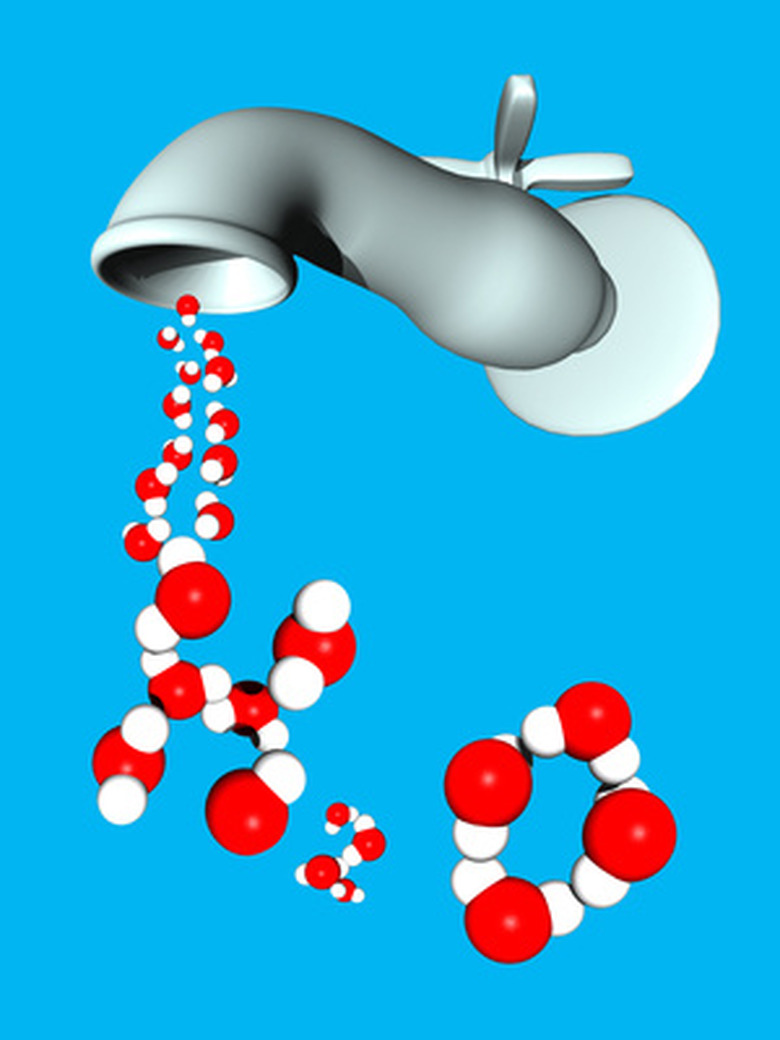How To Make A Molecule School Project
Molecules are comprised of two or more atoms that are bonded by pairs of electrons, and can be made up of atoms of the same or different chemical elements. The water molecule (H2O) can be used as an example for a model school project. It contains two molecules of hydrogen (H2) and one molecule of oxygen (O). For a model project, start with simple molecules for young children and make them more complex with increasing ages and class levels. The finished models not only help students learn, but can also be displayed in a classroom on a tabletop or suspended from the ceiling with string.
Step 1
Give each student six Styrofoam balls, six toothpicks and a red broad-tipped marker. Tell them the balls are atoms, and they are going to be connected to make molecules.
Step 2
Ask students to color two of the balls red. Explain that these will be the oxygen atoms; the four white balls will be hydrogen atoms.
Step 3
Demonstrate how to stick two balls together with a toothpick, then tell the students that the two red oxygen atoms are a molecule of oxygen. Write the letter "O" on the board and tell them it means one molecule of oxygen.
Step 4
Tell the class to make a hydrogen molecule using two white balls and a toothpick. Repeat with the remaining two white balls. Write the letter H and number two on the board to the left of the letter O (creating the symbol H2O) and explain that H2 means two molecules of hydrogen.
Step 5
Have them connect the oxygen and hydrogen molecules with toothpicks and announce that they have just made water. Refer to the chemical symbol for water – H2O – that you wrote on the board.
Step 6
Walk around the room and collect all of the "water" (molecule models) in the bowl, then label it "water" and display it on a tabletop.
Things Needed
- 1 inch Styrofoam balls – 6 per student
- Broad-Tipped red markers
- Toothpicks
- Large plastic bowl or wide-mouth jar
TL;DR (Too Long; Didn't Read)
Assign molecules for the children to make at home using jelly beans or gumdrops. Other examples of simple molecules for a model project include methane (CH4) – one carbon and 4 hydrogen molecules; carbon monoxide (CO) – one carbon and one oxygen; and carbon dioxide (C02) – one carbon and two oxygen. Complex models for older students can be built showing protons, neutrons and electrons; glue protons and neutrons together for the nucleus, and add circling electrons using toothpicks.
Warning
Small children can take things literally. Make sure that they understand the models are representations and not the real thing. Before starting the project, create an example of models and symbols by drawing a huge bumble bee on the blackboard and explain that it's not a real bee, but a symbol of one.
Cite This Article
MLA
Eigen, Donna. "How To Make A Molecule School Project" sciencing.com, https://www.sciencing.com/make-molecule-school-project-7773408/. 24 April 2017.
APA
Eigen, Donna. (2017, April 24). How To Make A Molecule School Project. sciencing.com. Retrieved from https://www.sciencing.com/make-molecule-school-project-7773408/
Chicago
Eigen, Donna. How To Make A Molecule School Project last modified March 24, 2022. https://www.sciencing.com/make-molecule-school-project-7773408/
